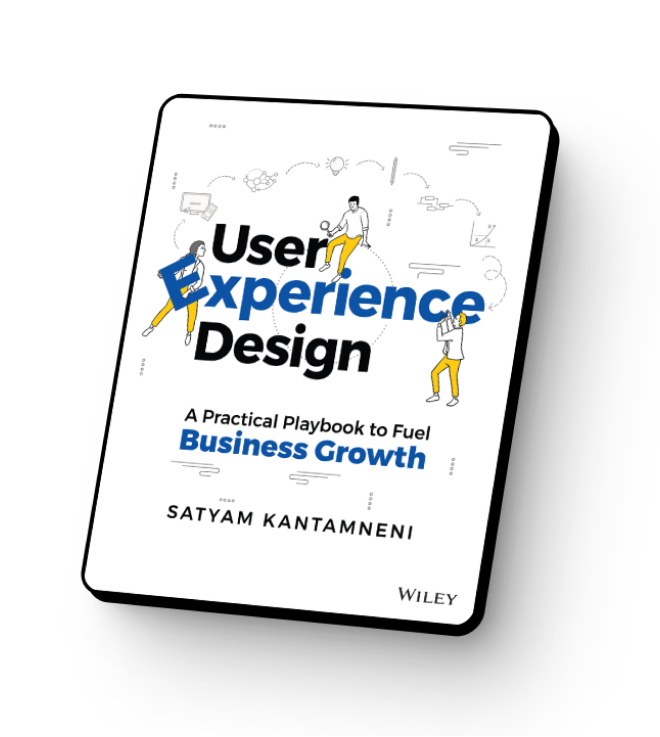In a recent 1:1 mentorship session, a User Research leader posed a critical question that might resonate with many:
“We regularly conduct usability testing to improve design prototypes and have a great relationship with the design & product team. However, we’re not involved in upfront discovery research, and the product roadmaps are often decided without our input. How can I steer my organization toward more discovery research when my team is already busy with design validation?”
Sound familiar? This scenario is, unfortunately, all too common among User Research Managers and Directors. After brainstorming in our mentorship call, I’m offering an open letter that outlines high-level solutions—strategies that have proven effective in my experience and consulting practice.
Dear Research Leader,
Firstly, kudos to you and your team for driving value through design validation research. You’re already ahead of many organizations in maturity.
However, the world of User Research is so much more than just optimizing designs; it’s about understanding the underlying needs and behaviors that guide user interaction with products.
Here are five key recommendations to help you and your teams engage more deeply in discovery research:
1. Gain Domain Expertise:
User Researchers gain invaluable domain insights through careful observation. Capitalize on this by:
- Reading industry reports from reputable sources such as Forrester and Gartner.
- Reviewing company financial reports for a holistic understanding.
- Develop a close working relationship with your Analytics department to understand key metrics.
- Networking within the company to learn how other departments contribute to product development.
With a well-rounded perspective, the quality of your UX research reports will naturally elevate, positioning you as the domain expert.
2. Demonstrate Empathy for Product Leadership and Executives:
Empathy shouldn’t be exclusive to end users.
Before influencing the product roadmap, understand the company culture and the intricate power dynamics at play. Schedule casual meetings with Product Managers and Executives to ask targeted questions that uncover their challenges, goals, and metrics of success. Examples of questions to gain insights include:
- What are product leaders’ top pain points?
- What does success look like for them as individuals and for the product?
- What outcomes are they held accountable for?
- What inputs are influencing their decisions?
- What are sales and marketing pressing for in terms of product development?
- What customer segments are pushing them in a specific direction?
- What technology constraints are they facing?
- What competitive pressures are top of mind for them?
- Given a chance, what type of customers or user personas would they like to know more about?
- How is the product roadmap decided, and how often is it reviewed by the executive team?
- What financial assumptions and outcome metrics will this product team be held accountable for?
- How is the customer’s voice included in problem identification and definition?
- What input do Customer Success and Product Support teams contribute to the product development process?
3. Regularly Engage Stakeholders to Build Trust:
Effective researchers must:
- Synthesize findings from various departments, like Market Research and Business Strategy.
- Conduct workshops to involve stakeholders in the research process.
- Follow up frequently on design plans, timelines, and additional research needs.
By speaking the language of business and demonstrating value regularly, you build trust. This lays the foundation for future involvement in product definition through discovery research.
4. Find a Product Leader to Pilot – Start Small:
In the early years of my career, I focused on usability testing and design validation research. Through consistent value demonstrated through this research, I connected with a Product Leader who believed in observing users in their real context. This collaboration led us to foundational research—understanding and defining personas, field visits with prospects, new customers, and high-usage customers. We had defined goals and hypotheses and a focused area to study for new product development. This was my first opportunity as a new research manager to be fully involved in upfront product definition.
5. Democratize and Scale Research by Training Designers and Product Managers:
If a user research team’s time is wholly consumed by design validation, it’s a sign that research could be scaled by democratization. Start by empowering Designers and Product Managers to conduct simple usability tests. This will free up the UX Research team’s capacity for foundational discovery research. However, it’s crucial to implement best practices and clear guidelines for a successful democratization of research efforts. Please refer to the 5 best practices to scale, democratize user experience research across designers and product managers.
Conclusion
By embracing these recommendations, you’ll not only bring more value to your organization but also elevate your role of User Research in product development. Let’s shift the focus from merely validating designs to actively shaping the future of our products.
Talk to us for Rapid Usability Testing services that offer Fast, Agile, and Actionable Insights.
We serve both small and large companies.


